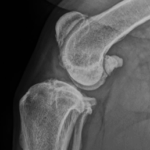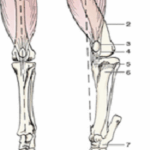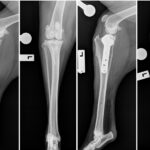
Sore ear with a yeast infection.
During spring and summer, we see a large number of dogs with sore ears.
The first thing owners normally notice when a dog has a sore ear is the dog shaking its head, though we also see dogs that hold their head to one side or scratch at the ear. Sometimes the dog shows very few signs of infection, and the owner notices a bad smell or a squelching noise when rubbing the dog’s ear.
At this time of year, the two most common causes of ear problems are allergies and grass seeds in ears. Ear infections are rarely a primary problem – that is, there is almost always an underlying cause which needs to be addressed.
What does an infected ear look like?
If you look at the inside of your dog’s ear, the skin should be smooth, pink and be clean. If you notice the ear is red, has a rough cobbled appearance, discharge or a bad smell, that’s a sign your dog has a problem.
What is happening inside the dog’s ear?
We will normally try to look down the dog’s ear when they first come to us with an infection. This is to check for grass seeds, and to attempt to see if the ear drum is intact. Some dog’s ears can be too sore to examine easily, so we sometimes need to give some sedation to thoroughly examine the ear. In some cases, we may delay examining the ear fully until after 7-10 days of treatment.
What type of infection is present?
When we see an infected ear, we will take a swab from that ear to see what type of infection is present. We most frequently see yeast infections in ears, but sometimes see a range of bacteria as well. By knowing what type of infection is present, we can better target our treatment plan to include the right antibiotic or antifungal medications. We also get some clues as to the likely underlying cause, so we can begin to address that as well.
Do you need a recheck at the end of treatment?
Rechecking the ear at the end of treatment is a very important step. It gives us a chance to ensure the infection has fully resolved, as well as allowing us to more thoroughly examine the ear to check for grass seeds, ear drum damage, or anything else which may cause ongoing problems.
Ear infections rarely get better on their own, and left untreated can cause a lot of pain as well as deafness. As with most conditions, early intervention by a vet gives the best results. A sore ear can cause your pet a lot of pain, so please have it checked quickly.




Trackbacks/Pingbacks